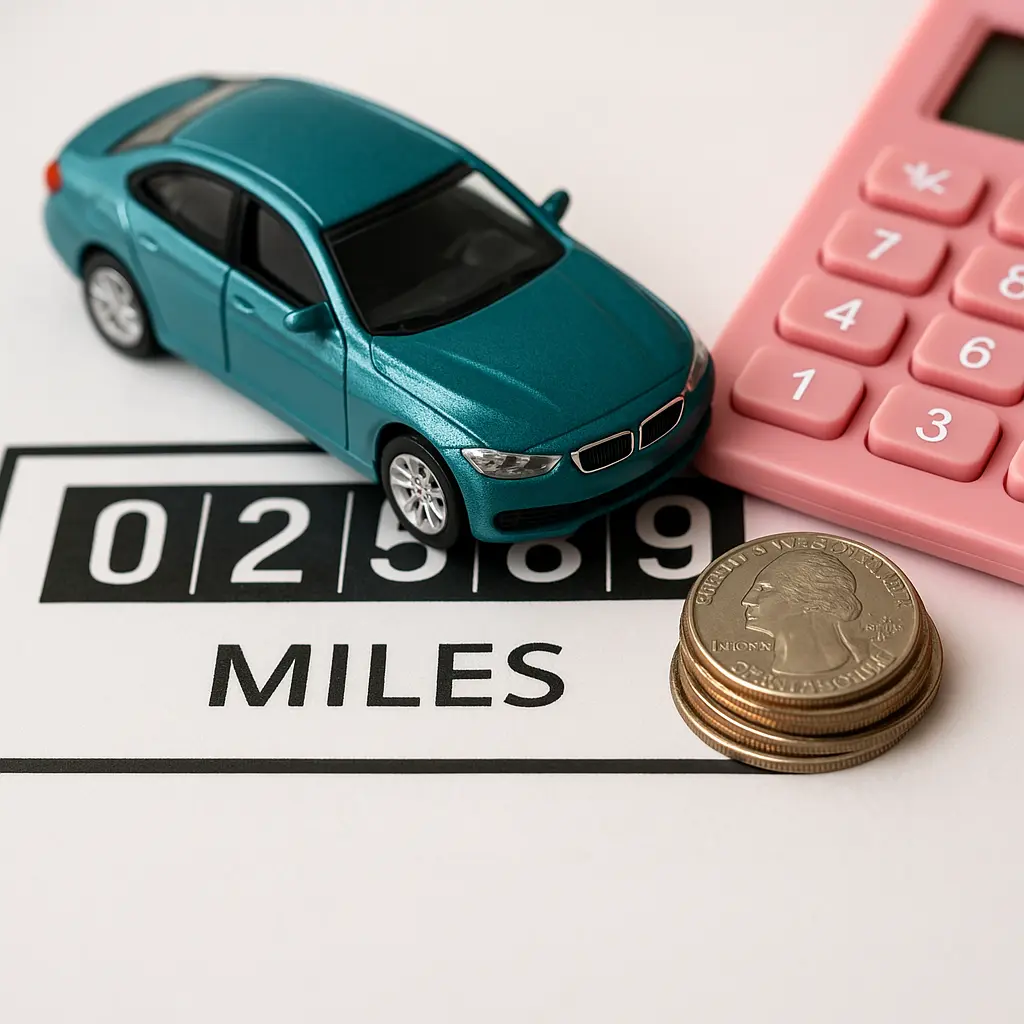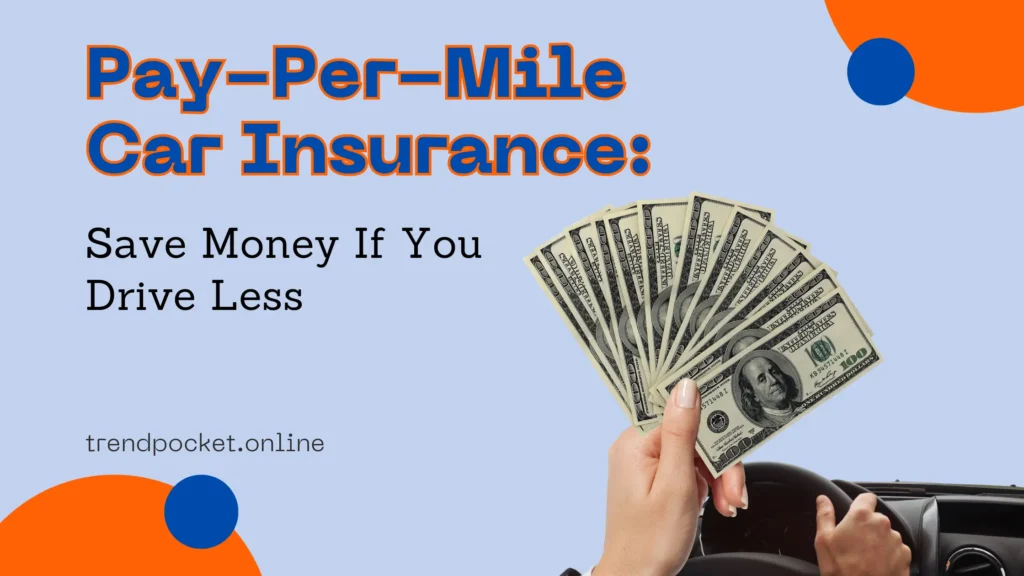Do you only use your car to run errands or drive to your weekend hiking spot? Maybe you live in a city where public transportation is reliable, and your car mostly stays parked. If that sounds like you, there’s good news you could be overpaying on your car insurance and not even realize it.
That’s where pay-per-mile car insurance comes in. It’s a growing trend in the insurance world, especially for people who don’t spend hours behind the wheel every day. This flexible insurance model could cut your costs significantly if you’re a low-mileage driver.
In this guide, we’ll break down what pay-per-mile insurance is, how it works, who it’s best for, and how you can find out if it’s right for you.
What Is Pay-Per-Mile Car Insurance?
Let’s start with the basics. Traditional car insurance charges you a flat monthly premium, regardless of how much you drive. That might work fine if you commute long distances daily. But what if you only drive a few hundred miles a month?
With pay-per-mile insurance, your premium is based on how many miles you actually drive. Think of it like a utility bill you pay for what you use. Drive less, pay less. It’s that simple!
How It Works
Pay-per-mile policies generally include two parts:
- Base Rate: A fixed monthly fee, similar to what you’d pay with a regular car insurance policy. This covers your car even when it’s parked.
- Per-Mile Rate: A small charge for every mile you drive. For example, if your per-mile rate is 5 cents and you drive 300 miles in a month, that adds $15 to your base rate.
So if your base rate is $40 a month and you drive 300 miles, your total monthly premium would be around $55.
Who Should Consider Pay-Per-Mile Insurance?

This type of car insurance isn’t for everyone, but for some drivers, it can be a game-changer. Here are a few examples of people who may want to explore this option:
- Remote workers: If you work from home and don’t have a daily commute, why pay full price for car insurance you rarely use?
- Urban dwellers: Living in a city often means access to public transportation, rideshares, and even scooters making car usage limited.
- Students living on campus: If your car mostly sits in a student parking lot, you’re likely paying more insurance than you need to.
- Retirees: If you’re no longer commuting and only drive occasionally, a traditional car policy might be overkill.
In short: If you’re driving fewer than 8,000 to 10,000 miles per year, switching to a pay-per-mile plan could save you some serious money.
Is Pay-Per-Mile Insurance Reliable?
One of the biggest concerns people have with any type of alternative insurance is whether or not it’s reliable. Here’s what you need to know:
- Coverage is comparable to traditional insurance: Just because you’re paying per mile doesn’t mean your coverage is less robust. You can still get the same protections—like liability, collision, comprehensive, and uninsured motorist coverage.
- Technology handles the tracking: Most companies use a device that plugs into your car or a smartphone app to track your mileage. It’s automatic and painless.
- Your info is secure: Reputable providers follow strict guidelines to ensure your data stays private and secure.
Some folks worry about being penalized for short bursts of high mileage, but many insurers offer features like mileage caps to prevent surprise bills even if you go on a road trip.
How Much Can You Actually Save?

Now let’s get to the part everyone really wants to know “How much money will I actually save?”
Well, it varies. But for many low-mileage drivers, pay-per-mile insurance can be significantly cheaper. According to industry estimates, some customers save up to 40% compared to traditional car insurance.
For example:
- Let’s say your base rate is $35/month
- Your per-mile rate is 6 cents
- You drive 500 miles in a month
Your monthly cost would be $35 + ($0.06 x 500) = $65
Compare that to a flat $120 traditional policy, and you’re saving $55 that month alone!
What If You Have a Month with More Driving?
This is a common question: “What happens during a road trip or a busier month?”
Here’s the upside most companies offering pay-per-mile plans include features like monthly caps. So even if you drive more one month, your costs won’t skyrocket. One weekend getaway won’t erase your typical monthly savings. Over the course of a year, the occasional long trip is usually balanced out by months where your mileage stays low.
How Is Your Driving Tracked?
You’re probably wondering how do insurance companies keep track of how much you drive?
Most providers use one of two technologies:
- Telematics device: This is a small gadget that plugs into your car’s OBD-II port usually under the dashboard. It transmits mileage to your insurer automatically.
- Smartphone App: Some insurers offer an app-based solution that uses your phone’s GPS and sensors to track your miles.
Both methods are simple, automatic, and require minimal involvement on your part.
Is There a Catch?
No insurance model is perfect for everyone, and there are a few things you should consider before jumping in.
- If you drive more than 10,000–12,000 miles a year, this model might not save you money.
- Some motorists don’t like the idea of being “tracked,” even if it’s just miles not behavior.
- Availability can be limited. Not every provider offers this model in every state.
But for many people, these concerns are small compared to the potential savings.
How to Get Started with Pay-Per-Mile Car Insurance
If you’re curious about whether this kind of policy could work for you, here’s how to dip your toes in:

- Calculate your annual mileage: Add up how many miles you realistically drive each month. If it’s consistently low, you could be a good candidate.
- Get quotes: Compare pay-per-mile plans with your current insurance. Check how the base rate and per-mile rates stack up.
- Read the fine print: Make sure you understand caps, fees, and how your data will be used.
- Download the app or install the device: Once you sign up, most insurers guide you through setup step-by-step.
Tip: Try to look at costs over a few months to get a real feel for savings. One expensive month doesn’t mean the whole plan isn’t worth it.
Final Thoughts: Is Pay-Per-Mile Worth It?
If you’re someone who doesn’t spend a lot of time behind the wheel, pay-per-mile car insurance could be a money-saving no-brainer. The model is fairer, more flexible, and better aligned with how much (or little) some people actually drive.
It’s ideal for remote workers, students, stay-at-home parents, retirees, and city dwellers really anyone who wants to stop paying too much for insurance they barely use.
So, why not take 10 minutes today and see if a pay-per-mile plan could work for you? A few clicks might save you hundreds of dollars each year.
Looking for More Ways to Save?
Car insurance isn’t the only place to find savings if you’re driving less. Here are a few bonus tips:
- Consider public transportation for your commute.
- Use car-sharing apps when you don’t need a full-time vehicle.
- Look into parking discounts or car-storage insurance when your vehicle is rarely used.
In today’s world of flexible lifestyles and remote work, it only makes sense that your car insurance keeps up. With pay-per-mile insurance, you only pay for what you use just like your gas or your cell phone. And that’s a refreshing change.
Looking for More Insurance Insights?
Want to learn more about car insurance basics? Check out our other helpful guides on:
- Does Car Insurance Cover Repairs and What You Should Know
- What Is an Insurance Endorsements and How Does It Work
- Tesla Auto Insurance Coverage Guide: What Every Driver Should Know
- Understanding Your Car Insurance Declarations Page Made Simple
- What Is Hazard Insurance and Why Homeowners Need It
- Affordable Car Insurance Options in San Antonio, Texas
- Best Cheap Car Insurance Options in Seattle, Washington
Ready to start saving? The road to cheaper car insurance might be shorter than you think.

